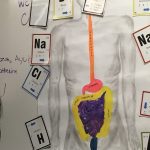Learning Objectives
At the end of this Section you should be able to:
Define universe and describe the evolution of human understanding of the universe.
Guiding Question:
Is there more than one universe? Are there multiverses?
Consider the following:
- Some scientists think there may be more than one universe. This idea is called the multiverse hypothesis.
- The study of the universe is called cosmology. Cosmologists study the structure and changes in the present universe.
- The universe contains all of the star systems, galaxies, gas, and dust, plus all the matter and energy that exists now, that existed in the past, and that will exist in the future.
- The universe includes all space and time.
Start Here:
Step 1: Watch the following video and learn about cosmology (with Professor Dave)
Use the following learning links to learn more about how the Components of the Universe have changed over time
Part 1
Learning Links
Stars: How Old is our Sun?
Lab reading assignment for scientific principles
Activities and Projects
Activity 1:
Make a Jelly Bean Universe
The jar below represents all the matter in the Universe. The coloured jellybeans are the matter we know and understand – all the protons, neutrons, and the like. The rest of the jar, the black jellybeans, represent the stuff we don’t understand – the dark matter and dark energy.
The graph below shows the composition of the entire Universe.
Student Information Handout (SNOLAB)
Dark Matter
In 1933 astronomer Fritz Zwicky at Caltech was looking at the rotational speed of galaxies in a cluster called the Coma cluster and noticed that galaxies were rotating much faster than they should have been – something invisible was causing a gravitational force that kept them moving faster than they should have done. This effect is observed throughout the Universe and we now call this invisible something Dark Matter. And we have no idea what it is.
Dark Energy
In 1998 astronomers from the Supernova Cosmology Project at Lawrence Berkeley National Laboratory noticed that the further away a supernova was, the faster it was moving away – basically, the expansion of the universe was accelerating! There was no explanation for this: the solution was Dark Energy. And again, we have no idea what it is.
But…
It’s worth bearing in mind that Dark Matter and Dark Energy are just ideas; we don’t know for certain that they exist or that they’re the solution to the problems mentioned above; there’s no guarantee that what’s called the ?The CDM model of the Universe is even correct! There could be something else entirely at work!
Learn what a Jelly Bean Universe is:
Activity 2:
Create a Star Graph – Hertzsprung-Russell Diagram
Mark the Star Graph – Student Assessment/Key for Hertzsprung-Russell Diagram
Learn about how to map Everything in Space:
Activity 3:
Learn about the “Signature of the Stars – flame test & absorption spectrum” Student Copy
Activity 4:



